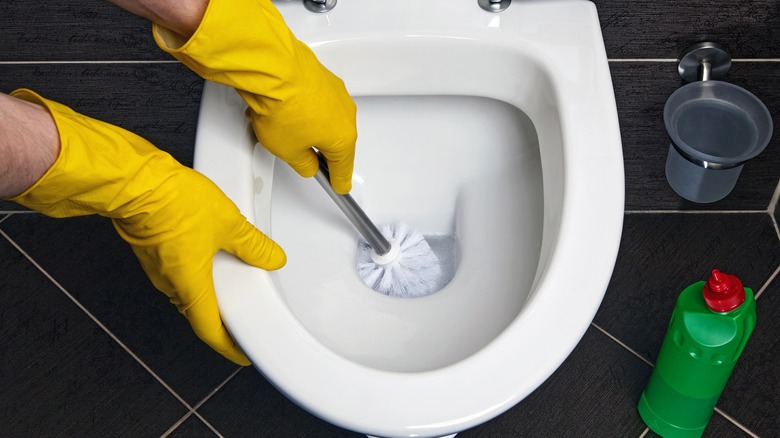Why You Might Want A Mirror Next Time You Clean Your Toilet
A slow-flushing toilet can often be attributed to clogged rinse holes beneath the rim, primarily caused by mineral deposits. Over time, these deposits can accumulate, leading to reduced water flow and a less efficient flush. To tackle this issue head-on, you can use a hand mirror to inspect these elusive holes. The mirror technique offers significant advantages. First, it illuminates the hidden areas beneath the toilet rim, ensuring you can spot even the slightest mineral or bacterial buildup that could affect the flush. This visual aid is crucial because these deposits are often invisible to the naked eye when looking from above.
Second, armed with the knowledge from your mirror-assisted inspection, you can proceed to clean the toilet with precision. Whether you use a specialized cleaning tool or a simple DIY solution, the goal is to remove these obstructions. Once cleared, the water can flow freely from the jets in its intended diagonal pattern, thereby enhancing the overall flushing efficiency. Regularly using this method ensures that your toilet remains in optimal condition, providing a consistently strong flush and reducing the need for frequent repairs or replacements.
How this hack works
Addressing a slow-flushing toilet is not just about immediate convenience but also about preventing long-term complications. Addressing this problem is straightforward with just a mirror and a coat hanger. Begin by flushing the toilet to remove any surface dirt or particles from the bowl. Utilize a hand mirror to examine the holes beneath the toilet rim closely. Light-colored, scaly residues typically point to mineral deposits, while dark spots suggest bacterial growth. Straighten a coat hanger and gently insert its tip into the holes, dislodging any buildup of minerals or bacteria. After cleaning, flush the toilet to check if the water jets out freely, indicating clear passages. By diligently following these steps, you'll enhance the flushing efficiency and avert potential problems.
A slow-flushing toilet, if ignored, can lead to a few different issues, including higher utility bills. Inefficient flushes often necessitate multiple attempts, wasting water and escalating costs. Additionally, persistent slow flushing heightens the risk of clogs in the toilet and connecting pipes, potentially leading to expensive repairs. Incomplete flushing can also foster bacterial growth, resulting in foul smells and health risks. Finally, the strain from repeated flushes can damage the toilet's internal mechanisms, causing leaks or necessitating replacements. In essence, promptly addressing a slow-flushing toilet ensures its optimal function and sidesteps future complications. A mirror comes in very handy as an easy and efficient way to resolve this issue.


